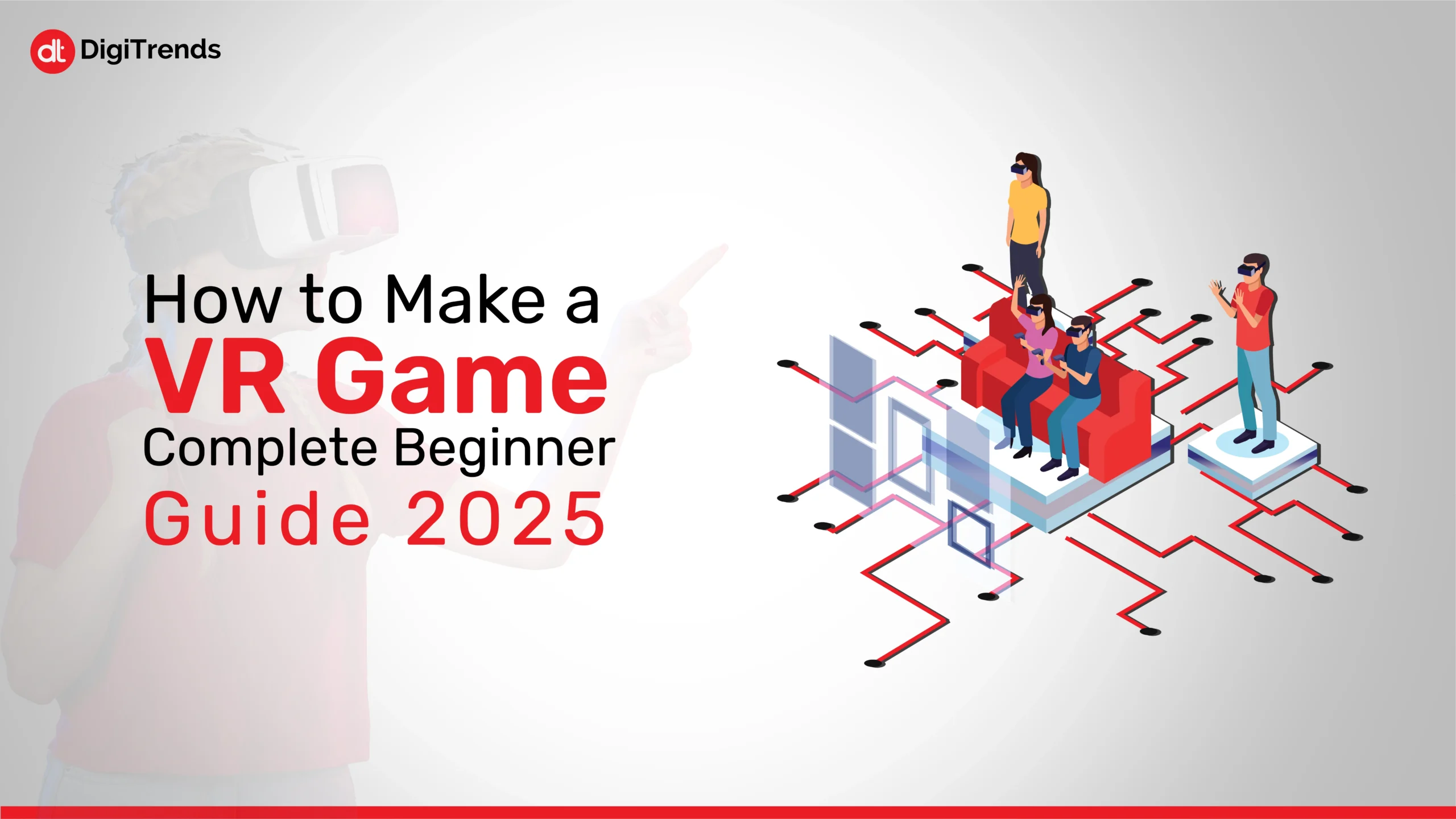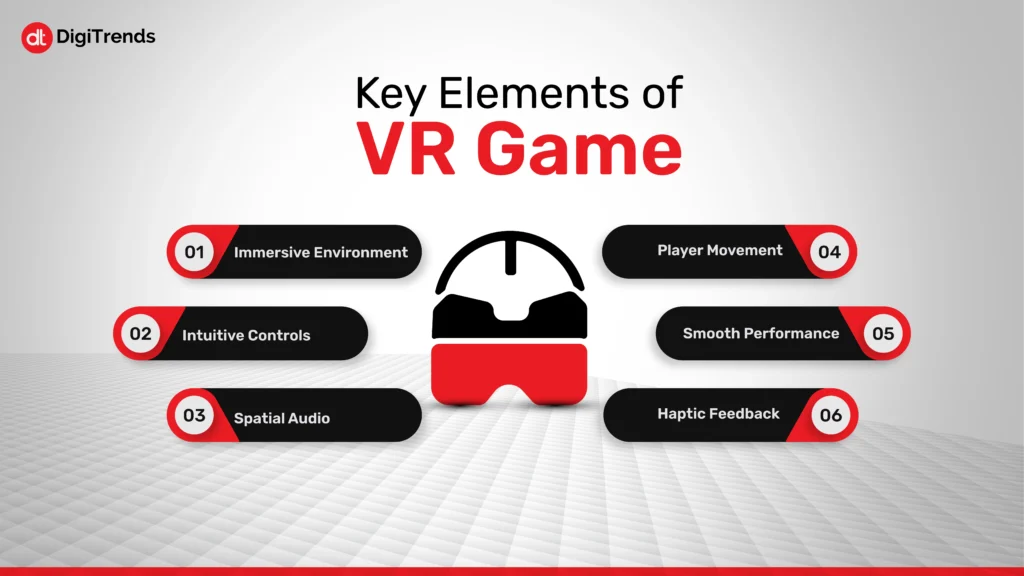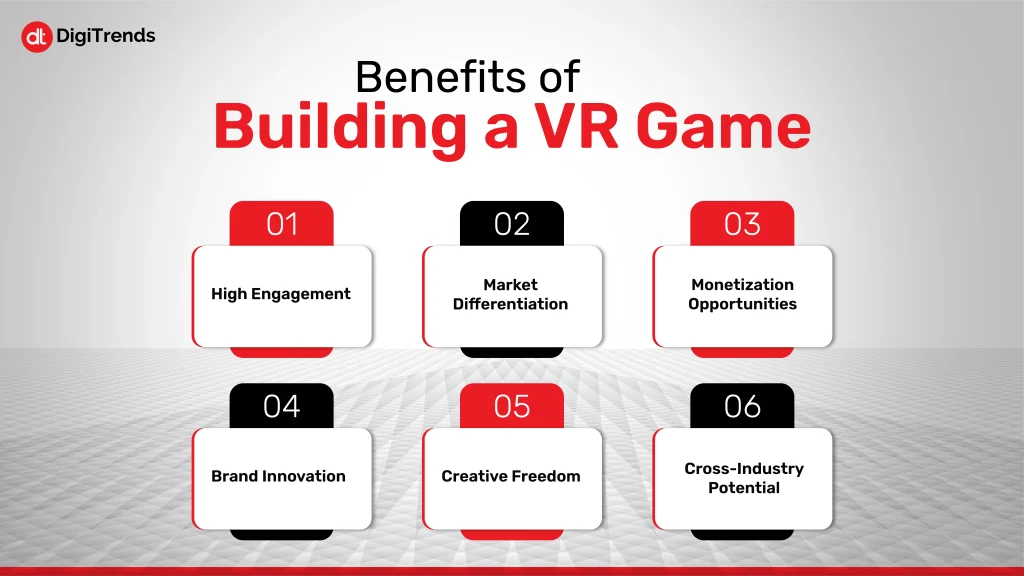
Top 11 EHR Systems in Healthcare Transforming Patient Care
Explore the 11 best EHR systems in healthcare, what makes each one stand out, and what benefits they bring for the healthcare industry.
Continue Reading
Virtual Reality (VR) often feels like a science fiction concept, but it is a reality, and it is changing the way we experience games. Headsets are more affordable, development tools are easier to use, and people from all backgrounds are getting into VR game making. If you’ve ever thought about building your virtual world, now is a great time to start.
No matter if you’re a gamer curious about how to make a VR game, a person interested in technology, a developer, or just curious about gaming. This blog will cover every aspect of creating a virtual reality game, from the development process, the tech stack required, to the costs.
If you’re ready to learn something new and bring your ideas to life, you’re in the right place. Let’s get started and learn how to make a VR game.
Virtual Reality game creation means creating (designing) immersive interactive digital experiences that recreate a real or imagined place that the user can explore in a highly intuitive and physical manner. Contrary to the traditional video games that are played on a two-dimensional screen, VR games are played with the use of VR headsets, which track the movements of the player and respond to them in real-time.
During the development of VR games, the developers apply 3D models, advanced graphics engines (such as Unity or Unreal Engine), and motion tracking technology to create a virtual environment that appears real and responsive. The player can walk, reach out, grab, and interact with a thing or a character as if they are truly inside the game, creating a strong sense of realism and involvement.
This form of development also requires a strong focus on user experience (UX) design, as factors like motion sickness, physical comfort, and intuitive controls play a crucial role in how enjoyable and accessible a VR game is. From action-packed adventures and puzzles to simulations and educational games, VR game development is pushing the boundaries of what’s possible in digital entertainment.
If you are wondering how to develop VR games, then you need to understand that VR game development should include creativity, technical skills, and the right tools.
Let’s have a look at the steps you need to take for VR game development:
You must begin by having a clear idea in your mind of what you desire. This is the basic step of developing a VR game. Begin by drawing a clear map of what kind of experience you want to give your players, and then label your game as an action game, a puzzle challenge, a simulation, or an educational journey. Describe features of the gameplay, the setting, the characters, and the interactions that will make your game stand out.
The VR devices you are choosing should be able to support Meta Quest, HTC Vive, PlayStation VR, or other devices. You need to think of your target group and the kind of hardware they would like. The technical requirements of every platform are different; hence, it is important to choose the right platform.
The next step is selecting a game engine. The majority of VR games are developed with strong game engines such as Unity or Unreal Engine. They both facilitate the VR development and have the help of plugins, templates, and documentation to simplify it. Unity can be used by novices and mobile VR, and Unreal provides better graphics and performance.
Create 3D models, animations, environments, and sound effects that are optimized for VR. Performance is critical to consider; VR rendering needs a higher framerate (typically 90 FPS or above) to prevent nausea.
Program hand tracking, gesture recognition, teleportation, and object interaction, and haptic feedback via SDKs and APIs native to your platform (e.g., OpenXR, Oculus SDK). Ensure controls feel natural and intuitive to the users.
Testing is one of the most important steps of VR game development; you need to regularly test the game with actual users. Minimize graphics and optimize latency, and other interaction comfort and performance. Consider asking the users who test the game about motion sickness, user fatigue, and accessibility, so you’ll be able ot solve any issues that arise before the launch.
When your game is ready, you can take it to the VR app markets such as Meta Quest Store, SteamVR, or PlayStation Store. It is great to design launch trailers, create web pages, and market your game through social media, VR communities, and influencers to build hype about your game and gather more users.

Creating a successful VR game goes beyond visuals; it also requires designing an experience that feels natural, engaging, and immersive.
Let’s have a look at the key elements that help develop a VR game:
A realistic, well-designed 3D environment is the basis of every VR game. Realistic textures, quality graphics, and awareness of spatial design facilitate immersion into the game world experience and make players feel like they are present there.
Players use hand controllers or gesture tracking when playing VR games, so the controls of the game must be easy to learn for everyone. Whether it is a professional gamer or a newbie, they should find it easy to use. The interaction should look like the real world, and an intuitive one: whether the player is grabbing objects, pointing, or navigating menus.
Sounds also play a major part in the success of a VR game. The ability to play audio in the game in specific directions or 3D audio lets the players experience realism through sound. A virtual world can feel very much a part of the real world when you hear footsteps behind you or voices in the distance.
Movement mechanics must be comfortable and prevent motion sickness. Popular techniques include teleportation, smooth locomotion, and room-scale movement. Well-designed movement systems help players explore the environment safely and intuitively.
To maintain immersion and prevent discomfort, VR games must run at high, stable frame rates, usually 90 FPS or higher. Lag, frame drops, or glitches can break the sense of presence and lead to motion sickness.
Vibration and tactile feedback help in adding another layer of realism. When players touch or collide with objects, haptic responses from controllers simulate physical contact, increasing the depth of interaction.
A compelling narrative or context enriches the player’s experience. Storytelling in VR can be more impactful, as players feel like active participants rather than passive viewers. Dynamic environments, character interaction, and visual cues help deliver the story without disrupting gameplay. Some examples of story-driven VR games are: The Under Presents, Wilson’s Heart, and Blood and Truth.
The cost of developing a VR game can vary widely based on the game’s complexity, the platform it’s built for, and the resources involved. On average, VR development can cost anywhere from $10,000 to over $300,000 or more. Here’s a breakdown of the key factors that influence the total cost:
Let’s have a look at the table below, which shows the cost of VR game development:
| Cost Factor | Estimated Cost (USD) |
| Game Complexity | $10,000 – $200,000+ |
| Platform | Varies (adds $5,000 – $30,000) |
| 3D Asset Design | $5,000 – $80,000 |
| Development Team | $20,000 – $150,000+ |
| Audio & Music | $2,000 – $25,000 |
| Testing | $3,000 – $20,000 |
| Post-Launch Support | $2,000 – $50,000+ |
| Total Estimated Budget | $10,000 – $300,000+ |
While this table gives a general overview of VR game development costs, it’s important to remember that every project is unique. The final budget depends on several variables, including your goals, development team, and the experience you want to deliver. In the next section, we’ll explore the key factors that influence these costs in more detail to help you plan more effectively.
The cost of developing a VR game isn’t fixed; it varies based on multiple technical, creative, and business-related factors. Understanding what drives the budget can help you make smarter decisions and avoid unexpected expenses. From the type of VR platform you choose to the level of interactivity, every element plays a role in shaping the final cost.
Below are the main factors that can significantly impact the overall development budget.
Simple VR games with limited environments and basic interactions cost significantly less than large-scale, content-rich games with advanced mechanics, multiplayer modes, or open-world exploration. The more features and levels you add, the higher the cost.
Developing for high-end VR systems like Meta Quest 3, PlayStation VR2, or HTC Vive can have different cost implications. Some platforms may require certification, specific SDKs, or additional optimization, which can affect both time and budget.
3D modeling, animation, audio design, and environment creation are resource-intensive tasks. Custom assets and realistic textures take more time and money to produce compared to using pre-made or templated elements.
The cost will also depend on whether you hire a freelance developer, a small studio, or a professional game development company. A typical team might include game designers, Unity or Unreal developers, 3D artists, sound engineers, and QA testers.
While hiring freelancers might seem like an affordable option, it also comes with its drawbacks, including a lack of professionalism and inconsistency. Hiring a proper development company is a more reliable choice as they offer professional developers and other services like marketing. Companies like DigiTrends specialize in the development and have a proven record of delivering high-quality projects.
VR games require extensive testing for comfort, performance, and compatibility. Time spent on bug fixing, frame rate optimization, and motion sickness reduction adds to the total development budget.
Ongoing updates, bug fixes, and content expansions also carry costs. Successful VR games often require post-launch support to maintain player engagement and adapt to new hardware or platform changes.
Building a VR game requires the right combination of tools, platforms, and technologies to bring your virtual world to life. The tech stack you choose will depend on your goals, target VR devices, and team expertise.
Here’s a breakdown of the essential components:
These are the core platforms used to build VR games, providing the framework for design, development, physics, and rendering.
These software development kits provide tools and libraries to integrate VR device functionality.
Used to create game assets, characters, environments, and animations.
Spatial and 3D audio are critical for immersive VR experiences.
Essential for coding, collaboration, and project management.
Helps in identifying bugs, optimizing performance, and understanding user behavior.
Choosing the right tech stack is crucial for efficient development, smooth performance, and long-term scalability of your VR game. By leveraging these tools, developers can build robust, immersive, and market-ready virtual experiences.

Investing in VR game development offers more than just cutting-edge entertainment; it opens doors to unique advantages for creators, brands, and businesses.
Now that you have an idea of how to create a VR game but still feel unsure, let’s take a look at the key benefits of building one:
VR games create immersive experiences that fully capture players’ attention. Because users are physically involved in the gameplay, engagement levels are much higher than with traditional games. This leads to longer play sessions, increased retention, and deeper emotional connections with the content.
In a competitive gaming industry, VR helps you stand out. Offering a virtual reality experience instantly sets your product apart, attracting early adopters, tech enthusiasts, and curious gamers looking for something new and exciting.
From in-app purchases and premium game sales to partnerships and branded experiences, VR games offer multiple revenue streams. As the virtual reality market size is estimated at USD 32.40 billion in 2025 and is expected to reach USD 187.40 billion by 2030, there are increasing monetization opportunities, especially for unique, high-quality titles.
For businesses, building a VR game can be a bold statement of innovation. Whether used for marketing, training, or customer engagement, VR allows brands to showcase their forward-thinking approach while connecting with audiences in memorable ways.
VR breaks the boundaries of traditional game design, offering creators the freedom to build entirely new worlds, mechanics, and storytelling formats. It encourages experimentation and pushes creative limits in ways that flat-screen games often can’t.
The benefits of VR games extend beyond entertainment. They’re being used in education, healthcare, architecture, and training simulations, demonstrating their potential to add value across multiple industries. Building a VR game can position you for opportunities well beyond the gaming market.
Virtual Reality game development is more than a trend; it’s a transformative approach to digital experiences that blends technology, creativity, and innovation. From building immersive environments and designing intuitive controls to exploring new ways of storytelling and user engagement, VR opens up endless possibilities for both developers and players.
While the cost of creating a VR game can vary depending on multiple factors, the benefits, from high user engagement to market differentiation and cross-industry applications, make it a worthwhile investment. As the VR ecosystem continues to grow, now is the perfect time for creators, brands, and businesses to explore the potential of virtual reality and deliver experiences that truly stand out.If you want to learn how to make a VR game, it starts with understanding the development process, essential features, cost considerations, and hiring a professional development company like DigiTrends, which can bring together creativity and technology to create a VR game that stands out. These are the key steps toward creating a truly immersive and successful experience.
